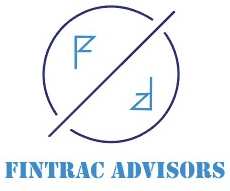Innovators Growth Platform (IGP): A Launchpad for High-Growth Startups (Without Making a Public Offer)

Shilpa Gududur
Shilpa Kiran Gududur has over 23 years of experience. She is a Practicing Company Secretary, Registered Valuer – SFA, and Insolvency Professional. She serves as an Independent Director for a listed company. Her practice areas include Valuation, Corporate Law, FEMA Compliances, IBC and representation before NCLT. She has experience in various industries, including Banking, Construction, and Manufacturing. She was the Compliance Officer of Unnati, the first Section 8 Company to be listed on the NSE Social Stock Exchange.
SEBI’s Innovators Growth Platform (IGP): How Accredited Investors Fuel India’s Startup Ecosystem
SEBI’s Innovators Growth Platform (IGP) has emerged as a definitive gateway for India’s high-growth, tech-led startups to enter the public markets. Backed by recent regulatory reforms, the IGP now offers a more streamlined and transparent framework that empowers both ambitious startups and accredited investors (AIs). These changes, aligned with the latest SEBI guidelines and NSE documentation, mark a significant step forward in fostering innovation and deepening India’s capital markets.
Key Features of the IGP (2025 Framework)
- Easier Compliance:
a. The platform features relaxed disclosure norms compared to main board listings, thereby reducing regulatory burdens for startups.
b. No quarterly reporting for the first two years post-listing. - Targeted Investor Base:
a. Prioritizes Qualified Institutional Buyers (QIBs) and Accredited Investors (AIs), both of whom understand high-risk, high-reward ventures.
2025 Reforms: What Has Changed?
- Holding Period Reduced: Pre-issue capital must be held by eligible investors for 1 year (down from 2 years).
- Accredited Investors (AIs):
- Eligibility:
- Individuals must have an annual income of at least ₹50 lakh and a liquid net worth of at least ₹5 crore.
- Corporates must have a minimum net worth of ₹25 crore.
- Family trusts must have an audited net worth exceeding ₹500 crore.
- Role: Accredited Investors (AIs) contribute to the 25% pre-issue capital requirement, thereby enhancing credibility and facilitating liquidity.
- Eligibility:
Global Access: Category III FPIs and pooled funds (AUM ≥ $150M) can invest.
Who Can List on the IGP?
- Sectors: Tech, biotech, AI, IP-driven, and data analytics.
- Eligibility:
- Pre-issue capital: 25% held by QIBs/AIs / Family Trusts for ≥1 year.
Listing Process
- Eligibility Check: Ensure 25% pre-issue capital held by QIBs/AIs for ≥1 year.
- Documentation: File a draft information document (not a full prospectus) with the NSE or BSE.
- Regulatory Approval: SEBI/NSE clearance typically in 45–60 days.
- Post-Listing Obligations:
a. Liquidity: Market makers are appointed to ensure trading stability.
b. Compliance: Simplified reporting norms apply for the first two years post-listing.
Why Do Accredited Investors Matter?
- Validation: AIs help ensure that startups meet the 25% pre-issue capital threshold, thereby enhancing credibility.
- Liquidity: They enable partial exits for early investors (e.g., angels and VCs) without requiring a full IPO.
- Expertise: Their involvement attracts institutional investors and fosters broader market confidence.
Current Market Status of the IGP
- No Listings Yet: Despite reforms, no startups are listed on IGP as of April 2025.
- SEBI’s Focus: The 2025 amendments aim to address adoption challenges by easing norms for AIs, global investors, and migration.
Why This Matters?
- For Startups: They can access growth capital without significant equity dilution, enhance their credibility, and leverage a faster listing process.
- For Investors: They gain early access to high-growth ventures backed by SEBI safeguards.
- For India: The IGP positions India as a credible rival to global platforms such as NASDAQ, thereby fostering innovation-led growth.
#StartupFunding #CapitalMarkets #SEBI #Innovation #Investing #IGP #AccreditedInvestors #TechStartups #India2025
Disclaimer
The content published on this blog is for informational purposes only. The opinions expressed here are solely those of the respective authors and do not necessarily reflect the views of Fintrac Advisors. No warranties are made regarding the completeness, reliability, or accuracy of this information. Any action taken based on the information presented in this blog is strictly at your own risk, and we will not be liable for any losses or damages resulting from its use. It is recommended that professional expertise be sought for such matters. External links on our blog may direct users to third-party sites beyond our control. We do not take responsibility for their nature, content, or availability.


